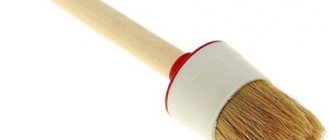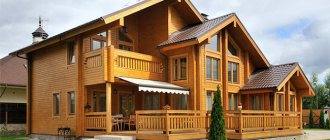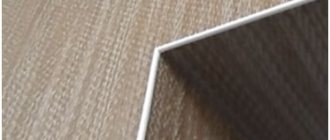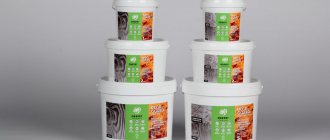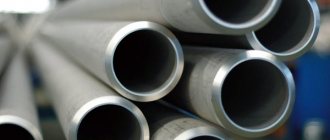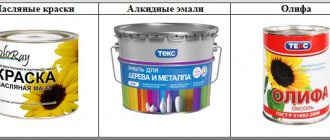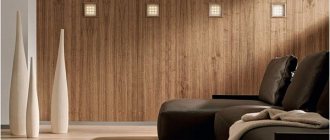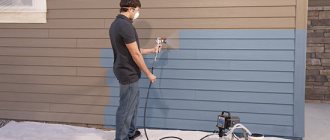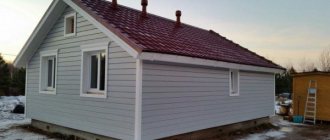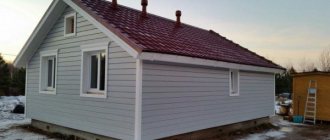More details about each stage:
- surface preparation
- primer
- powder coating
- polymerization
- recovery systems
- ensuring and controlling the quality of powder painting
- advantages of powder painting compared to conventional
Powder coating is a layer of polymer powders that are first sprayed onto the surface of the product and then polymerized at a certain temperature in a special oven (polymerization oven).
The basic technology of powder coating of metal consists of three main stages:
- Preparing the surface for painting (includes removing dirt and oxides, degreasing and phosphating to increase adhesion and protect the product from corrosion).
- Applying a layer of powder paint to the surface to be painted in a spray chamber.
- Melting and polymerization of powder coating in a polymerization oven. Formation of a coating film. Cooling and curing of paint.
For large production volumes or processing of large parts, a transport system is used. With its help, painted products are easily moved from station to station. The principle of its operation is that the parts to be painted are supplied on a special suspension or trolleys that move on rails. The transport system allows the painting process to be carried out continuously, thereby significantly increasing work productivity.
At the beginning of the powder coating process, parts are loaded onto a conveyor belt. When pre-treating the surface before painting, the parts enter a five-stage cleaner, where they are treated with a cleaner, rinsed with clean water, phosphated and anti-corrosion treatment.
After this, the parts are dried. To do this, they are driven through a special drying oven to prevent moisture from entering them, after which they are cooled.
The next step is to place the parts in a painting or spray booth where the powder paint is manually sprayed onto the part using an electrostatic sprayer using compressed air. In the sprayer, the paint particles become electrically charged. Under the influence of electrostatic forces, powder particles are attracted to the surface and are arranged in uniform layers on it.
The powder coated parts are then placed in an oven or curing chamber for approximately 10 minutes to directly coat the part. The temperature in the oven reaches 150-220 degrees. Here the powder particles are melted and fixed on the surface to be painted. This process is also called surface shaping. After the coating film has formed, the parts are cooled and removed from the conveyor.
Features: hanging the profile before painting.
Before applying paint to the profile, it is suspended.
To attach the profile to the traverse, it is pre-drilled or holes with a diameter of 5 mm are punched on a stamp at a distance of 15 mm from the end of the profile. For simple aluminum profiles, holes must be made on the non-facial surface; for combined profiles, holes are drilled in the aluminum part. The profiles are attached to the traverse using special hooks or aluminum wire. Depending on the type of paint line, there are specific features in the orientation of the profile on the suspension system. On painting lines with a horizontal suspension system, the combination profiles must be suspended from the aluminum, heavier part, to avoid distortion of the combination profile.
For horizontal system
suspension profiles must be secured to avoid excessive deflection.
The cause of deflection may be the heavy weight of the combined profiles, or their unequal cross-section. As a consequence after the painting process, there is a bent profile.
For vertical painting
When using equipment for vertical painting, it should be ensured that the combined profile is suspended from the heaviest bowl. If both bowls are heavy, then fasten them to each bowl of a combined profile.
Strictly avoid hanging the combined profile by the thermal insert.
About aluminum alloys
Qualicoat recommends using a narrowed aluminum alloy chemical composition for aluminum profiles compared to standard alloys 6060 and 6063 (in percent) [2]:
- silicon: 0.30-0.55
- iron: 0.10-0.30
- copper: no more than 0.03
- manganese: no more than 0.10
- magnesium: 0.35-0.60
- chrome: 0.05
- zinc: 0.03
- titanium: 0.10
For comparison, here are the requirements for the content of chemical elements in standard alloys 6060 and 6063, which go beyond the above limits:
- the maximum silicon content in alloys 6060 and 6063 is 0.6%;
- the maximum iron content in alloy 6063 is 0.35%;
- the maximum content of copper, chromium and zinc in alloys 6060 and 6063 is 0.10%;
- the maximum magnesium content in alloy 6063 is 0.9%;
Use of powder paints
Powder coating was invented in 1950. The essence of this method is to spray dry powder dye onto a metal surface, followed by heat treatment. Under the influence of high temperature, molten paint particles sinter together, forming a durable layer.
Powder applied paint is almost impossible to remove because it firmly adheres to the metal, protecting it from damage and corrosion. Powder coating is used for painting parts that are subject to frequent mechanical damage, for example, car bumpers. This method allows you to ideally paint parts of complex configurations and profiles with a corrugated surface.
Powder coating process
Powder coating stages:
- pre-treatment (cleaning, polishing, degreasing, exposure to an anti-corrosion compound);
- spraying of paint powder (in this case, the part and paint particles are charged with opposite charges, under the influence of which the powder adheres to the metal surface);
- heat treatment (the part is placed in an oven at a temperature of 150–220°C for polymerization).
Can I use this painting method at home? The paint application technique itself is simple and anyone can master it. However, the work requires special equipment (spray gun, polarizing chamber, heat treatment oven), as well as a perfectly clean, dust-free room. All this costs a lot of money and only pays off if the master plans to work to order on an ongoing basis. For one-time painting, it is more advisable to use the services of a special workshop.
Thus, we got acquainted with three options for painting aluminum with your own hands at home. I recommend watching the following video, which will resolve any possible questions.
The electrolyte is being prepared. A solution of salt (9 parts) and baking soda (1 part) is mixed in a glass container.
Before painting aluminum, it is sanded with a sheet of sandpaper and degreased. An object is immersed in a liquid. You cannot touch it with your hands.
The electrolyte solution is poured into an aluminum container. The product to be painted is immersed in it. The power supply point is connected to it with the positive pole, and to the container - with the negative pole.
Everything is left in this state for 2 hours.
Next, aniline CM is used. Its components: liquid - 1 liter, vinegar, 9% - 1 ml, dye - 15 g. all components are mixed and heated to 75-80 degrees. Painting an aluminum profile immersed in the solution will take 15 minutes. The longer the item is in the solution, the richer the shade will be.
Powder and liquid paints
Powder coatings differ significantly from “liquid” paints. Liquid paints are usually suspensions of paint particles that “float” in solvents to form a suspension. Only after all the solvent has completely evaporated does the paint become ready for use for its intended purpose. The absence of solvents is an important advantage of using powder coating instead of liquid painting, since it significantly reduces the harmful impact of the painting industry on the environment.
Adviсe
Recommendations from experts will help you obtain a high-quality painted surface:
- The even distribution of the dye released by the can will be ensured by frequent, strong shaking. The action provokes constant mixing of the components, acquiring homogeneity.
- Before applying paint, clean the nozzle to ensure an even spray. Turning the can upside down, press the spray until the spraying liquid becomes clear.
- It is recommended to sand the surface with coarse sandpaper. 600 material number will do an excellent job of treating the surface before applying the last protective layer.
Choosing any method, following the recommendations, technology, sequence of actions will allow you to obtain a high-quality painted part, protected from oxidative processes
For work, it is important to choose high-quality materials, paint and varnish products, degreasing solutions, then the result will be positive
How to paint an aluminum product without anodizing?
Aluminum products can be painted without resorting to anodizing. This method is well suited for large parts (car bumper, long profile or large sheet), for which it is difficult to find a suitable container for anodizing. With this painting method, the existing oxide layer is removed mechanically and a preliminary primer is applied.
- Thorough sanding of the object to remove the oxide layer. To avoid scratches for sanding, use fine-grained sandpaper with a grain size from P80 to P100;
- Priming for paint (black primer for dark shades and white primer for light shades). The primer is sold as a ready-to-use aerosol or a two-component mixture. The aerosol costs from 200 to 500 rubles, is applied in one layer and dries for 2 hours. The second option is more complicated, but gives a more reliable result. After mixing the components together, apply with a roller or brush and dry for about an hour. Two-component primer VL-02 costs about 700 rubles. per pack 800 g.
- Coloring. Spray paint from an aerosol can from a distance of 20 to 30 cm using top-to-bottom movements. It is recommended to apply 3 to 4 thin layers with an intermediate drying time of 5 minutes. Layer-by-layer application gives a smoother, streak-free surface. For final drying, wait about 6 hours.
- Applying varnish. The varnish film forms a beautiful glossy layer and provides additional protection against moisture. One of the options is two-component varnish EP-730 based on epoxy resins. Its cost is about 232 rubles. per kg.
After painting is completed, you need to change clothes and wash your hands and face thoroughly with soap and water. The work area should be well ventilated and free of dust and insects that could stick to the freshly painted surface.
Cost of painting aluminum
The price of painting aluminum depends on the size and configuration of the products - to find your bearings, look at the price list. The price already includes loading and unloading operations, metal preparation and packaging of finished products.
| Order quantity | The cost of powder painting of metal, incl. VAT (20%), rub* | ||
| when painting metal according to the RAL scale | when painting with ANTIK paint | ||
| Artist's paint | Customer's paint | ||
| 14.5—100 m2 | 299.00 | 255.00 | 340.00 |
| 101–500 m2 | 286.00 | 245.00 | 325.00 |
| 501—1,000 m2 | 270.00 | 230.00 | 310.00 |
| 1,001–5,000 m2 | 260.00 | 220.00 | 290.00 |
| 5,001—10,000 m2 | 250.00 | 210.00 | 280.00 |
| more than 10,000 m2 | 240.00 | 200.00 | 270.00 |
See the full price list for powder coating services
Why do you need to paint metal?
Gates, canopies, garage boxes or any other metal structures begin to deteriorate over time and require updating. This is especially true for structures that are located in the fresh air.
The main enemy of all metals is water (especially salty) and oxygen. The reaction of oxygen and water starts oxidation processes that are not so easy to stop.
There are types of metals that are resistant to corrosion, for example, aluminum, which is coated with a special protective layer - aluminum oxide.
But if the surfaces are not treated with protective compounds, the parts will quickly rust, and the structure itself will become fragile and may leak in some places.
Metal parts have a smooth surface: for this reason they have poor adhesiveness (adhesion to the surfaces of solid or liquid bodies). This means that not all paint and varnish compositions may be suitable.
High-quality anti-corrosion paint for metal should not only adhere well, but also protect the metal from moisture. If you choose a bad material, then within a year the gate will be covered with rust and begin to creak.
Primer for aluminum: selection, use and application
16.08.2018
Any metal parts, including aluminum, need priming before painting. Without primer, paints and varnishes adhere very poorly and quickly begin to peel and fall off the surface.
To maximize the life of the paint, a special primer for aluminum should be used.
This article will discuss the stages of preparing a metal surface, characteristics, types of primers, and the technology for applying different primer solutions.
Painting aluminum parts
Anyone who has painted aluminum knows that this is not a very easy task. If you paint aluminum products without preliminary preparation, the paint will lay down in an uneven layer, unevenly, and after a short period of time it will begin to peel off. Paint does not adhere very well without the use of a primer because:
- aluminum has a smooth surface. This metal has a peculiar crystal lattice, due to which the surface structure is very smooth. When painting, the smallest particles of paint have nothing to cling to, as a result of which they lie rather poorly on the base, and after some time they gradually fall off;
- high surface tension. Aluminum is a complex metal; its molecular bonds create strong tension on the surface, causing the surface to appear very slippery, and at the same time as if greasy. A high surface tension significantly reduces adhesion, that is, the adhesion of the base to the paint and varnish material;
- aluminum has an oxide film. This metal in its pure form reacts very quickly with oxygen contained in the air, as a result of which a durable layer of oxide film appears on the surface. This layer, which is visible to the naked eye, is manifested by corrosion, which has a heterogeneous structure and poor adhesion to other materials, including varnishes and paints.
Important! The more time passes, the thicker the oxide film becomes, it takes the form of peeling, loose corrosion foci, they slowly spread over the entire surface, while the aluminum becomes thinner, and the surface layer affected by corrosion will fall off along with the paint applied to it
How to properly prepare aluminum
In order for varnishes or paints to adhere perfectly to aluminum and adhere firmly to it, the base must be properly prepared before using a primer.
When manufacturing aluminum parts at a factory, preparing this metal is a complex process, but even at home you can prepare aluminum well.
Before using aluminum primer for painting, the following preparations must be completed:
Clean the surface mechanically
It is very important to remove dust, dirt, old paint and oxide film from the metal. The best tool for this cleaning is a sandblaster, but if you don’t have one, you can use coarse sandpaper, a coarse file, or a sander with a special protective disc.
Aluminum needs to be cleaned to a shine. The base is degreased and etched. These procedures are needed to remove a continuous oxide layer, greasy, oil stains from a metal surface. Degreasing is carried out using alcohol, acetone or solvent. After this, small aluminum products can be dipped briefly into a plastic container in which phosphoric acid and water have previously been diluted. Large parts or structures must be coated with the same orthophosphorus solution using a brush or foam rubber. This procedure must be performed strictly with rubber gloves, thick clothing and goggles. Creating a conversion layer. At home, such a layer can be created using zinc phosphate, which is applied to purified aluminum. Zinc phosphate does not undergo a corrosive process; it has a rough structure, so it is very suitable for smooth aluminum parts, providing a high rate of adhesion of the base to the paint and varnish material applied after priming. Washing and drying. It is necessary to rinse the base to completely remove chemicals from it that would interfere with the application of the primer. After washing under running water, the product is dried either using a hair dryer or in the open air. Applying primer. At this stage, the primer is applied in one or more layers. When the primer dries, the base will be covered with a polarized protective layer, which will become an excellent base for applying paint and varnish material.
Powder coating technology. Primer
For anti-corrosion protection, two types of primers are used: powder primers, which are then coated with powder paint.
1. Passive anti-corrosion protection.
An epoxy anti-corrosion primer is used, which forms a durable film with good resistance to chemical and mechanical stress.
Used to protect steel and aluminum products under mild operating conditions (coatings of welded structures used indoors, wheels made of aluminum alloys, etc.). Smoothes the surface in the presence of small defects, as well as after sandblasting.
2. Active anti-corrosion protection.
-containing epoxy is used
priming. Provides high corrosion resistance of products under harsh operating conditions. If there is penetrating damage in the coating system, then traces of local corrosion may appear at this location, however, this will not have any effect on the adhesion of the coating in the adjacent surface, i.e. the soil limits the area where corrosion can spread.
It is used to protect all steel products when used outdoors (grid flooring, fences, fences, stairs, building structures, etc.).
How to paint aluminum?
Several types of solutions can be used to paint this metal.
A set of special compositions are produced for painting non-ferrous metals
Acrylic mixtures
They are made on the basis of acrylic, which plays the role of a polymer. The most effective option is in cans. Aerosols allow you to apply a more uniform layer, which is impossible to achieve with a brush or roller.
Such solutions have the ability to withstand various temperatures, mechanical influences and moisture. Their application is accompanied by preliminary priming.
Acrylic in aerosols is the most convenient and easy to use
Aniline dyes
Such products are used primarily for working with textiles, wool and leather. But also this composition, or rather its solution, is an excellent option for coating aluminum surfaces. The products are available in liquid and powder form. When diluting them, certain safety measures are observed, because the dye has a toxic effect. Once applied, the coating does not pose a health hazard.
With the right approach, aniline compositions for fabrics can be used to paint metals.
Epoxy composition
An alternative to acrylic paints are epoxy mixtures; they are made on the basis of resins. The composition allows you to obtain a reliable, resistant and durable coating. But it is difficult to work with such material without appropriate experience, since the process must occur quite quickly.
Two-component epoxy compounds are highly durable
Powder paints
This promising type of coloring composition is a powder that is applied with a special sprayer after preparing the base. The coating is obtained by melting the applied mixture, which requires complex equipment.
Professional equipment is required to apply powder paints
Painting methods
There are three main methods used to paint aluminum parts and surfaces, which require specific equipment and materials. It is impossible to carry out painting work using standard compounds and obtain an attractive result.
DIY aluminum painting
It is recommended to paint such metal in the following ways:
- Application of powder composition.
- The use of anodizing technology, which involves the use of aniline dyes.
- Coating products with special types of primer followed by laying certain enamels.
Each method requires extreme accuracy and compliance with all technological nuances.
Coating thickness
The EN 12206-1 standard and the Qualicoat standard require control of powder coating thickness only on significant surfaces. The specified minimum thickness of a standard single-layer coating is typically 60 micrometers.
The coating thickness on the control profile is measured at five separate locations on the profile. With a specified minimum thickness of 60 µm, the measurement results must satisfy the following requirements:
- The average coating thickness at these five measurement points must be at least 60 micrometers
- The coating thickness at each of these five points must be at least 48 microns (80% of the minimum value).
Why prepare the aluminum surface for painting?
This “production” oxide layer is inhomogeneous and contains foreign impurities and inclusions. Therefore, it does not have the ability to provide corrosion prevention in corrosive environments or to serve as an adhesive base for subsequent aluminum surface finishing.
To ensure corrosion prevention and optimal adhesion between the aluminum base and the finish coating, such as powder coating, this contaminated oxide layer must be removed to bare metal (aluminum alloy) through a suitable controlled pre-treatment process - chemical reactions of aluminum with various chemical reagents.
A controlled and homogeneous conversion/adhesion coating, such as yellow chromating or a special anodic coating, is formed on the chemically pure aluminum surface.
The use of chemical reagents and additives of high purity prevents new contamination of this prepared layer, which is then preserved as much as possible until the specified finishing coating is applied.
Qualicoat Specifications
Qualicoat specifications provide a detailed description of the requirements for powder coatings, as well as the technology and equipment for their production. This document, also called the Qualicoat standard, is based on the requirements of EN 12206-1:2004 and several international ISO standards.
A common way of specifying powder coating specifications in European countries, such as the UK [1], is to include in the contract something like: “Architectural powder coating to the standard requirements of the Qualicoat Specification from an approved manufacturer” [1].
How to paint aluminum?
Several types of solutions can be used to paint this metal.
Acrylic mixtures
They are made on the basis of acrylic, which plays the role of a polymer. The most effective option is in cans. Aerosols allow you to apply a more uniform layer, which is impossible to achieve with a brush or roller.
Such solutions have the ability to withstand various temperatures, mechanical influences and moisture. Their application is accompanied by preliminary priming.
Aniline dyes
Such products are used primarily for working with textiles, wool and leather. But also this composition, or rather its solution, is an excellent option for coating aluminum surfaces. The products are available in liquid and powder form. When diluting them, certain safety measures are observed, because the dye has a toxic effect. Once applied, the coating does not pose a health hazard.
Epoxy composition
An alternative to acrylic paints are epoxy mixtures; they are made on the basis of resins. The composition allows you to obtain a reliable, resistant and durable coating. But it is difficult to work with such material without appropriate experience, since the process must occur quite quickly.
Powder paints
This promising type of coloring composition is a powder that is applied with a special sprayer after preparing the base. The coating is obtained by melting the applied mixture, which requires complex equipment.
We have the best consumables for powder coating
is the official representative of the famous Turkish in our country. Powder paint for aluminum of this brand is respected by specialists all over the world. We sell in Russia the entire range of this company, capable of satisfying a wide variety of requirements regarding the operating conditions of the painted products and the choice of color scheme. Our sales network covers Moscow, St. Petersburg and a number of remote regions. We are ready for mutually beneficial cooperation with large and small trade and service enterprises, providing targeted supplies of high-quality dyes.
Our store has everything you need to paint aluminum with powder paint in any shade specified in the RAL catalog. The price level that our company has set in St. Petersburg is designed to attract different categories of clients.
Chemical preparation of aluminum surface
In order to obtain a good powder coating on the aluminum surface, this surface is subjected to complex chemical preparation technology. The purpose of chemical preparation of the surface of any metal for powder coating is:
- Removing all surface contaminants, including dirt, oxides, grease and oils
- Creates a surface for optimal powder coating adhesion
- Achieving maximum uniformity over the entire surface of the painted product.
The technology for chemical preparation of aluminum surfaces usually includes the following steps:
- Degreasing in special cleaning solutions
- Thorough rinsing in clean water after all chemical work operations
- Etching in a caustic soda solution for a given time and at a given temperature
- Surface treatment in a solution of nitric or sulfuric acid (lightening)
- Treatment to create a chromate conversion coating (or technically equivalent coating) to ensure good powder coating adhesion
- Final rinse in deionized water
It would not be an exaggeration to emphasize that only full compliance with all requirements for the preparation of the aluminum surface makes it possible to realize the full potential of powder paint to create a strong and durable protective and decorative coating.
On small powder coating lines, horizontal chemical processing of profiles is usually used in a sequence of working and rinsing baths (Figure 1). In large industries, vertical profile processing systems are used, in which working solutions and rinsing water are supplied from a system of sprayers (Figure 2).
Figure 1 – Line of baths for chemical preparation of the surface of aluminum profiles
Figure 2 – Vertical powder coating system
Introduction
When designing structures made from painted aluminum profiles, the problem arises of correctly specifying the requirements for powder coating. Below are the recommendations of the international organization Qualicoat, which is involved in the certification of aluminum powder coating industries [1-3]. The purpose of these guidelines is to assist architects, designers, builders and building owners in agreeing powder coating requirements on aluminum profiles during the design and contracting stages.
Varieties and composition
Removers are divided depending on the type of paint that needs to be removed:
- Universal – suitable for various surfaces: metal, concrete, wood. They have a long shelf life and are able to dissolve even powder coatings, but are useless for water-dispersed, acrylate and latex paints.
- For oil-based coatings. The composition includes an organic leavening agent, thickener and solvent. The mixture must be shaken before use.
- For water-based coatings. The mixture is almost identical in composition to water-dispersive removers. It is advisable not to purchase liquids containing hydrochloric acid.
- Express washes. They have a fast exposure time - just a few minutes are enough.
- For powder paints. Due to the high strength of powder coatings, stronger and more toxic removers are used.
Universal products are less expensive and are suitable for almost all types of paints, but they are recommended to be used in extreme cases, because they often do not immediately completely dissolve the coating, and thus their consumption increases.
Since the wash liquid only works until it evaporates completely, wax or paraffin is added to some wash formulations. These materials slow down the evaporation process, thereby increasing the quality of the wash. But they have a drawback: paraffin reduces the ability of the metal to adhere.
Sometimes just water and detergent are not enough to remove paraffin or wax. In such cases, use acetone or another organic solvent. On the modern market you can find washers without paraffin; more modern evaporation inhibitors are added to their composition. Such products do not require subsequent special cleaning of the surface.
Based on the type of consistency, the following types of washes are distinguished:
- liquid;
- in the form of a gel;
- sprays;
- water-soluble powders;
- pasty.
The advantage of gel solvents is the ability to apply them to vertical surfaces and even to ceilings due to their viscosity.
You need to be careful with sprays: you need to spray the composition at a distance of 25-30 cm from the surface and in a vertical position, at a great distance from fire sources (they are not fire resistant) and use closed clothing and safety glasses.
Paste-type removers are well suited for profiled surfaces because they perfectly penetrate into all the recesses that, for example, a liquid solvent cannot handle. Liquid formulations are best applied to flat surfaces.
The remover can be applied by brush if the surface has an uneven texture and fine detail. For a large surface with an even texture, it is preferable to use a roller. You can use a spray gun to apply the remover in liquid form.
Based on the types of components in the wash, they are divided into the following categories:
- acidic (hydrochloric acid is often present);
- alkaline;
- organic (characterized by the absence of alkalis and acids).
Popular removers include:
- Aerosol remover ABRO PR-600. It is safe and easily washed off with water, does not contain alkalis. The paint softening time is approximately 10-20 minutes. Suitable for removing acrylic, epoxy and polyurethane coatings.
- Cleaner "SP-7". The composition is based on organic components, it is also safe. Used to remove oil, acrylic, epoxy and alkyd coatings. This Russian-made remover has all the necessary advantages: fire resistance, rapid destruction of paint, penetration into deep layers of coating, removal of corrosion traces. Suitable for both horizontal and vertical surfaces.
Reviews
Actual address:
142715, Moscow region, Leninsky district, p. Besedy, st. Promyshlenny passage, vl. 1 page 1
Actual address: More details
LLC "POKRAS.RU"
Legal address:
142715, Moscow region, Leninsky district, p. Conversations, PO Box 231
+7 ext. 130, 131, 132 - “Coloring” section. Working days from 8.00 to 17.00 ext. 133 — section “Manufacture of metal products”. Working days from 8.00 to 17.00 ext. 120, 121 - order readiness. Working days from 8.00 to 20.00
+7 seven days a week from 8.00 to 22.00
expresses gratitude to Pokras.ru LLC for fruitful cooperation. We believe in maintaining existing business relationships and hope for further mutually beneficial cooperation. We wish you successful development and achievement of new heights in business.
Free Style, Bondarkov N.A.
1 photo
18/12/2017
Actual address:
142715, Moscow region, Leninsky district, p. Besedy, st. Promyshlenny passage, vl. 1 page 1
Actual address: More details
LLC "POKRAS.RU"
Legal address:
142715, Moscow region, Leninsky district, p. Conversations, PO Box 231
+7 ext. 130, 131, 132 - “Coloring” section. Working days from 8.00 to 17.00 ext. 133 — section “Manufacture of metal products”. Working days from 8.00 to 17.00 ext. 120, 121 - order readiness. Working days from 8.00 to 20.00
+7 seven days a week from 8.00 to 22.00
Maybes RUS LLC expresses deep gratitude and sincere gratitude to POKRAS.RU LLC for the impeccable and timely painting of our equipment. Thanks to the competent approach and well-coordinated work of the team of POKRAS.RU LLC, our company successfully presented its equipment at the 20th International Exhibition Aqua-Therm Moscow 2016. We express confidence in maintaining the existing friendly relations and hope for further mutually beneficial and fruitful cooperation.
General Director of Maybes RUS LLC, Khalepa A.A.
2 photos
12/02/2016
Actual address:
142715, Moscow region, Leninsky district, p. Besedy, st. Promyshlenny passage, vl. 1 page 1
Actual address: More details
LLC "POKRAS.RU"
Legal address:
142715, Moscow region, Leninsky district, p. Conversations, PO Box 231
+7 ext. 130, 131, 132 - “Coloring” section. Working days from 8.00 to 17.00 ext. 133 — section “Manufacture of metal products”. Working days from 8.00 to 17.00 ext. 120, 121 - order readiness. Working days from 8.00 to 20.00
+7 seven days a week from 8.00 to 22.00
Harutyun Rafikovich and I personally express our gratitude to you for the high quality and efficiency of the work on painting our products, completed under invoice No. 5008. We would like to thank the powder coating specialist Nika for the attentiveness and highest skill he showed in completing our order. Special thanks to Vasily Ivanovich for his help and support.
Alexander Bednyak,
23/11/2015
Actual address:
142715, Moscow region, Leninsky district, p. Besedy, st. Promyshlenny passage, vl. 1 page 1
Actual address: More details
LLC "POKRAS.RU"
Legal address:
142715, Moscow region, Leninsky district, p. Conversations, PO Box 231
+7 ext. 130, 131, 132 - “Coloring” section. Working days from 8.00 to 17.00 ext. 133 — section “Manufacture of metal products”. Working days from 8.00 to 17.00 ext. 120, 121 - order readiness. Working days from 8.00 to 20.00
+7 seven days a week from 8.00 to 22.00
I recently painted a frame from a Land Rover D2 at NAYADA, I really liked it, if there are discounts I’ll paint mine next year
fedor-77
30/10/2015
Read all reviews or leave your own
Features of painting work in winter
In industrial conditions, the need for painting at low temperatures arises if the object needs to be delivered on time, or if there is an urgent need to renew the surface of the building. In everyday life, such urgency is rarely observed, but it still happens. There are a number of features of painting in the cold season:
- The most unfavorable temperature for using paints, enamels and primers in winter is from minus 5 degrees to plus 5 degrees. It’s better to work even in cold weather, because it is in the specified range that condensation will form on any surface. In the presence of moisture, the adhesion of the coating greatly deteriorates and the properties of the paints change. The quality of the coating decreases and it will not last long.
- If you decide to paint facades in cold weather, you need to remember that facade paint of any brand takes 2-3 times longer to dry than in warm weather. To get a high-quality coating, you need to use a heat gun for drying or stretch the film over scaffolding.
- You should choose only enamel and primer suitable for the winter season. Using the wrong material will cause it to freeze, and the ice will prevent the product from being applied to the walls. The final result of the work depends on the quality of the paint.
A number of modern paints are perfectly applied at zero temperatures and in frost, some can be used down to –20 degrees. There are good products that are resistant to temperature changes.
It is important that the temperature of the paint and varnish material itself be positive during operation. If the material is cold, place it in a container in a bucket of warm water
Powder coating technology. Polymerization
After applying powder paint, the product is sent to the coating formation stage. It involves melting a layer of paint, subsequent production of a coating film, its curing and cooling. Melting and polymerization occur in a special oven. There are many types of polymerization chambers; their design may vary depending on the conditions and characteristics of production at a particular enterprise. In appearance, the oven is a drying cabinet with electronic “stuffing”. Using the control unit, you can control the oven temperature, dyeing time and set a timer to automatically turn off the oven when the process is completed. Energy sources for polymerization furnaces can be electricity, natural gas and even fuel oil.
Furnaces are divided into continuous and dead-end, horizontal and vertical, single and multi-pass. For dead-end furnaces, an important point is the rate of temperature rise. This requirement is best met by ovens with air recirculation. Conductive dielectric coating chambers ensure uniform distribution of powder paint on the surface of the part, but if used incorrectly, they can accumulate electrical charges and pose a hazard.
Melting and polymerization occurs at a temperature of 150-220 ° C for 15-30 minutes, after which the powder paint forms a film (polymerizes). The main requirement for polymerization chambers is to maintain a constant set temperature (temperature variation of at least 5°C is allowed in different parts of the furnace) for uniform heating of the product.
When a product coated with a layer of powder paint is heated in an oven, the paint particles melt, become viscous and merge into a continuous film, displacing the air that was in the layer of powder paint. Some air may still remain in the film, forming pores that degrade the quality of the coating. To avoid the appearance of pores, painting should be carried out at a temperature above the melting point of the paint, and the coating should be applied in a thin layer.
With further heating of the product, the paint penetrates deeply into the surface and then cures. At this stage, a coating is formed with the specified characteristics of structure, appearance, strength, protective properties, etc.
When painting large metal parts, their surface temperature rises much more slowly than that of thin-walled products, so the coating does not have time to fully harden, resulting in reduced strength and adhesion. In this case, the part is preheated or the curing time is increased.
It is recommended to cure at lower temperatures and for a longer period of time. This mode reduces the likelihood of defects and improves the mechanical properties of the coating.
The time it takes to obtain the required temperature on the surface of the product is influenced by the mass of the product and the properties of the material from which the part is made.
After curing, the surface is subjected to cooling, which is achieved by extending the conveyor chain. Also for this purpose, special cooling chambers are used, which may be part of a curing oven.
The appropriate mode for forming the coating must be selected taking into account the type of powder paint, the characteristics of the product being painted, the type of oven, etc. It is important to remember that temperature plays a critical role in powder coating, especially when coating heat-resistant plastics or wood products.
After polymerization is completed, the product is cooled in air. After the product has cooled, the coating is ready.
Types of primers for aluminum
Nowadays, two types of primer are used to prepare aluminum for painting.
- Aerosol primer for aluminum. This primer is supplied in cans; the aerosol is acid-free and is most often used for treating small aluminum products. It covers, for example, bicycle frames, car rims, etc. This type of primer is very easy to use; it can be used in the garage and even on the balcony. The primer is completely ready for use, dries in a couple of hours, but does not have high resistance to mechanical stress. Primers are sold in the form of aerosols in car dealerships and construction hypermarkets. When choosing such a primer, you need to look at the packaging; it should indicate “Primer for Aluminum” or “Alu Primer”. It is best if the composition contains zinc powder, in which case the package will be marked “Zn”. When choosing, you need to look at the production date and expiration date.
- A two-component primer for application on aluminum is used to protect automobile bodies, aluminum boats, boats, and other products with a large area. One of the popular and effective two-component compositions is primer for aluminum VL 02. Two-component primers must be prepared in small portions. The prepared mixture must be applied no more than 6 hours in advance; it dries on the surface in about a day. After drying, a protective film is formed that has excellent mechanical strength and high corrosion resistance. The two-component primer includes an acid thinner and a base. The base contains polymer resins and zinc powder, which creates a conversion adhesive layer. The primer thinner VL-02 consists of special alcohol for degreasing the base and phosphoric acid, for etching aluminum and creating a phosphating protective layer.
The main advantages of our paint
Powder coating is a modern and rapidly developing method of applying protective and decorative coatings. Its advantages:
- high adhesion and mechanical strength;
- aesthetic appearance with the ability to choose any shade and surface texture;
- color stability over a long service life;
- guaranteed absence of foreign inclusions;
- resistance to moisture, chemically active substances, temperature changes;
- economical dye consumption;
- acceptable price.
This method of applying paint to the surface makes it possible to paint aluminum parts with a complex surface, which is not possible when using conventional dyes.
To purchase inexpensive and high-quality dyes for aluminum coating, please contact. All technical and commercial information is presented on our website. Here you can place an order by filling out a simple form. We trade wholesale and retail on favorable terms for the client.
